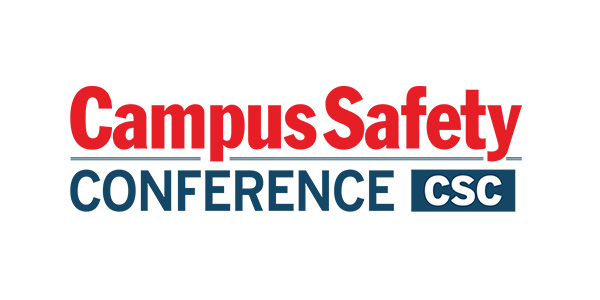Technology is advancing at warp speed, which presents a significant opportunity (and challenge) for building security. Traditional security systems such as standalone cameras, basic alarms, and mechanical locks are no longer sufficient to meet the needs of today’s interconnected environments.
As campuses evolve, they need smarter, more scalable, and seamlessly integrated systems. This shift is largely driven by the Internet of Things (IoT), which is fundamentally transforming how buildings are secured and managed.
The Rise of IoT in Commercial Security
The Internet of Things refers to a network of physical devices embedded with sensors, software, and connectivity that can exchange data with each other and centralized management platforms over the Internet. Where traditional security systems are reactive, IoT-enabled systems are inherently proactive.
They can monitor, analyze, and respond to potential threats in real time. In commercial building security, IoT devices include smart cameras, biometric access controls, intrusion sensors, and environmental monitors, all of which are linked to centralized cloud-based platforms that communicate in real time. These connected systems offer a level of intelligence and responsiveness that reactive legacy systems simply can’t match.
These systems enhance security while providing real-time visibility and control, all from a mobile device or a centralized dashboard. When combined with AI analytics, these systems can even identify suspicious behavior patterns, such as loitering or unusual after-hours activity, and escalate them for review.
Key Components of an IoT-Enabled Security System
IoT-based security ecosystems rely on several key components, each of which offers added value when integrated properly:
- Smart Surveillance Cameras: Now equipped with motion detection, facial recognition, and AI analytics, smart cameras enable real-time alerts and smarter incident detection.
- Access Control Systems: Access control is moving beyond keycards and PINs to mobile credentials and biometrics (e.g., fingerprint or facial identification) — offering a higher level of convenience and security. These systems can be customized by user role, location, and time of day, allowing for granular control and temporary access options.
- Intrusion Detection Sensors: These include window and door sensors, glass break detectors, and motion detectors that identify unauthorized access points. They instantly notify building management of potential breaches, allowing for prompt intervention.
- Environmental Monitors: Going beyond security, they protect against fire, water damage, and air quality issues — key concerns for schools, universities and hospitals. Many can be programmed to initiate protective actions, like lockdowns or HVAC shutdowns, to help mitigate damage.
Related Article: Hot Classrooms Prompt Complaints from Connecticut School Teachers, Parents
Real-Time Monitoring and Remote Control
One of the most transformative benefits of IoT in building security is real-time monitoring remote access, and remote monitoring. It allows campuses security personnel and administrators to view live camera feeds, manage access permissions, and respond to alarms from anywhere.
Smart Locks and Biometrics
Physical access control has traditionally relied on mechanical locks, swipe cards, and keys, all of which can be lost, duplicated, or misused. IoT-based access control, such as smart locks and biometric authentication, further modernizes physical access, offering secure, flexible options that can be controlled or revoked in real time, which is ideal for buildings with frequent visitors, rotating staff, or deliveries.
We’ve all seen movies or TV episodes that attempt to circumvent biometric access control in increasingly convoluted ways. However, biometric solutions such as facial identification, retina scans, or fingerprint authentication ensure that only authorized individuals can gain entry. These systems support multi-factor authentication, further enhancing security by requiring two or more forms of verification.
Related Article: Colorado Legislature Approves Facial Recognition Technology for School Security Despite Wider Restrictions
These solutions are becoming increasingly popular and cost-effective, so it’s advisable to invest time in learning how to deploy and maintain some of these systems and add to your “toolbox.”
Additionally, IoT-enabled access control allows facility managers and campus security personnel to customize access permissions based on user roles, time of day, or specific areas within a building. Contractors and visitors can be issued temporary credentials that expire automatically, reducing administrative burdens and the risk of unauthorized access.
Environmental Monitoring for Security and Safety
IoT also enables campuses to detect and respond to hazards such as smoke, carbon monoxide and flooding.
Additionally, IoT devices are often equipped with self-diagnostic features that monitor their operational status. If a camera goes offline or a sensor’s battery is running low, the system can notify maintenance personnel — or integrators under contract for support services — before system failures occur, keeping your installations reliable and responsive.
Integration with Other Smart Building Systems
Perhaps the biggest differentiator is the ability to tie security systems into a building’s larger automation framework. IoT-enabled platforms can integrate with HVAC, lighting, elevator controls and energy management systems, enabling coordinated responses to emergencies and improving efficiency.
This interoperability not only enhances security but also boosts energy efficiency and occupant comfort. For example, occupancy data from motion sensors can inform HVAC or lighting decisions, reducing energy waste.
The Increasing Role of AI and IoT in Security
AI is also elevating IoT-based systems by analyzing vast data streams to detect anomalies and improve system intelligence over time, identifying patterns and detecting anomalies that human operators might miss. For instance, AI can differentiate between a person loitering near a loading dock versus a scheduled delivery, or it can recognize unauthorized access attempts in real time.
This proactive intelligence helps reduce false alarms, allowing human security staff to focus on high-priority incidents. Over time, these systems can learn from historical data to further enhance accuracy and responsiveness.
The Need for a Holistic Security Approach
It’s important to recognize that IoT security is not a one-off solution. It should be implemented as part of a broader, holistic strategy that includes physical security, cybersecurity, human oversight, and emergency response planning.
Integrators can help guide campuses through this process, creating connected systems that are both secure and future-proof.
Ultimately, IoT-enabled security isn’t just an upgrade; it’s a transformation. It redefines how buildings are protected and how systems communicate. From advanced surveillance and biometric access to environmental monitoring and system integration, IoT-enabled security solutions provide a future-ready approach to building safety, where everything is connected and works together.
For campus administrators, facility managers and security professionals, embracing IoT is no longer optional; it’s essential.
Jason McGraw is group vice president and show director of CEDIA Expo/Commercial Integrator Expo. This article was originally published in CS sister publication Security Sales & Integration and has been edited.
Note: The views expressed by guest bloggers and contributors are those of the authors and do not necessarily represent the views of, and should not be attributed to, Campus Safety.







